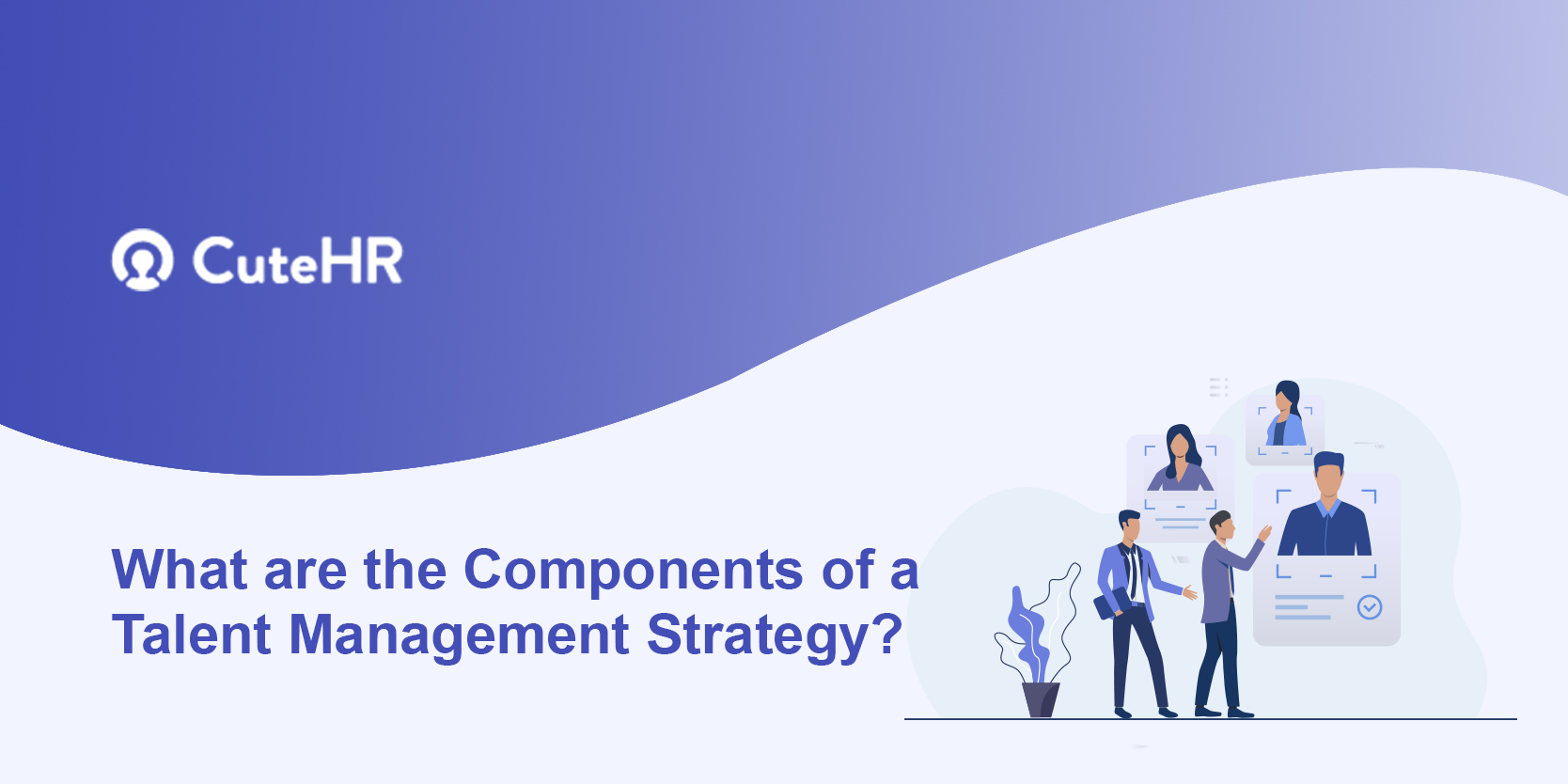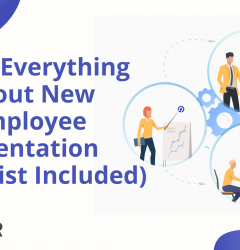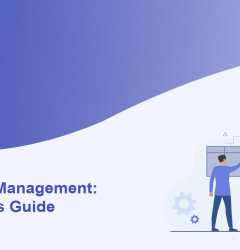05 Jul

Did you know? In 63% of companies, employees do not have regular discussions about their career growth or aspirations.
It is vital for businesses to consider how they invest in their personnel. From recruiting through development, adopting the correct processes to develop your people is vital for the growth and success of your organization. Designing a personnel management plan suited to your organization’s goals is one of the most effective methods to do this.
Talent management entails a continuous process of attracting top-tier personnel, developing their knowledge and abilities through training, encouraging them to enhance their performance, and maintaining a healthy work environment overall. When managed effectively, these procedures may empower your staff while also assisting the organization in achieving its ambitions and goals.
In this blog, we’ll look at some of the greatest talent management strategies for attracting top talent, retaining staff, and facilitating regular training and development.
Table of Contents
What is a Talent Management Strategy?
A talent management strategy is a flexible method for developing the company’s people assets through creative recruiting and performance management efforts. It enables you to apply approaches that improve your conventional talent management process to use your people resources in driving corporate growth and success.
With employee talent serving as your company’s performance lever, having a talent management plan in place helps you recruit and retain people, particularly high performers. At the same time, it allows you to satisfy the requirements and expectations of your employees, so they are content and feel like they are growing.
Your talent management strategy might begin with a talent search. You will be able to reach out to applicants and identify the most eligible prospects promptly if you use excellent recruiting strategies. From there, you may continue to apply applicable tactics to your workers’ skill development to guarantee that they are constantly on top of their game.
This ensures that your employees’ careers never stagnate and that they are continually improving their talents and qualities. Without a solid talent management strategy, your firm will be unable to maximize your employees’ skills. Worse, it can lead to dissatisfied personnel and a high turnover rate, which can impede corporate operations.
What are the Components of a Talent Management Strategy?
A firm must focus on these components of the Talent Management Strategy if it wants to win.
1. Employee Strategic Planning
A company prioritizes strategic workforce or employee planning. You develop your strategy and establish the objectives of your firm. Then you choose which employees are most suited for particular jobs to achieve your desired results.
You fill in the gaps by reassigning personnel to relevant responsibilities. You hire him if you don’t have a suitable individual for the task. Because various companies have different goals, their Strategic Employee Planning differs according to their requirements.
To fill vacancies, you may wish to start by looking within your company. Your workers have latent skills that are never fully used. Interview your current staff again before hiring outsiders.
2. Recruiting and Retaining Talent
You will have several duties that will demand expert-level attention when you design your strategic employee planning. This is where recruiting varies from talent acquisition and retention. Hiring is a method of filling vacancies, whereas talent acquisition is the process of acquiring professionals for certain tasks.
However, hardly everyone possesses leadership abilities, and those that do are not cheap. This is why the procedure takes so long. Sometimes you have a limited budget and don’t want to pay too much.
In that situation, make this strategy as soon as possible. It will allow you to be patient, and in the best-case scenario, you will meet the appropriate man who will agree to your requirements.
3. Maintaining and Controlling Performance
If carried out properly, this procedure is important to an organization’s path toward success. Direct contact between management and staff is required in this method. People in charge follow up with employees to get updates on their activities and check how they are doing.
To keep everything running properly, every employee must follow the rules and work at the appropriate rate. It can only be accomplished if management monitors daily reports, communicates with them, and assists and guides them to operate effectively and efficiently.
Keep in mind that your employees are just as accountable as you are. You lose your grasp on them, and they slide away in an instant.
4. Reimbursement
If you truly value your employees’ efforts, you will not let them go unnoticed. If they are fulfilling their goals and contributing to the company’s success, they deserve a little something more. Furthermore, by doing so, you demonstrate to them that you appreciate their work and that nothing has been forgotten.
In many circumstances where employees cause problems for their employers and fail to complete milestones on time, it is best to establish incentives on targets ahead of time. When employees understand that there are benefits to meeting goals, you will see a shift in your workplace.
If you have a limited budget, coffee vouchers or discount coupons are excellent choices.
5. The Process of Learning and Motivation
Knowledge is power, and you gain it by studying. Not every new employee will be well-trained and experienced. Instead of babysitting them for a month or two, you might hold educational workshops to educate them on how to be useful members of the organization. They will go right to work once they see how they can be a useful contribution to the organization.
There is no such thing as a lousy employee. Most of them just don’t have a clue what they’re doing. Display it to them. I appreciate what they’ve done. Motivation is essential. Do not dismiss their minor efforts since what is minor to you may be monumental to your employee. A kind gesture never harms anyone.
6. Career Development
If you want to see your company develop and succeed, you must also provide your employees the same chances. They are the driving force behind your company’s upward destiny. Do not confine them to one location. Allow them to develop.
Provide them with incentives and promotions. Make greater roles for them. Improve the apertures. Replace them with a better position that will allow them to progress in their careers.
Implementing career development techniques benefits your firm as well, resulting in enhanced employee satisfaction, increased productivity, higher staff retention rates, and improved performance.
7. The Succession Plan
Someone will always abandon you in the middle of a better work chance. It is not your fault that they have departed. However, it will be your responsibility if you are unprepared. Back up your strategy if you don’t want any disruptions. Determine who your company’s important employees are and estimate how much money you would lose if they departed. Find someone in your organization who you believe has the potential to fill the gap.
It is best to maintain a couple of solid resumes on hand at all times. Every time, one or two puzzle pieces slip out of position.
The Talent Management Strategy has shown to be a very effective technique for improved outcomes and results. If done correctly, you will see a significant increase in income. It is a procedure that includes benefits for both the corporation and the personnel.
We already know that a company’s performance is directly related to the efforts of its personnel. However, it is up to you to devise efficient ways to mobilize all hands on deck to lead your company to ultimate success.
Development of a Talent Management Strategy
Managing talent must be done in the context of the organization’s goal for the future. As a result, employees must be provided with the necessary tools to maximize their potential.
The scope and possibilities for the ongoing growth of its staff are required for the organization’s continual improvement. Furthermore, this guarantees that the organization’s accumulated abilities are updated, enhanced, and upscaled.
Talent management entails deliberately creating career pathways that are appropriate for each person. We all work better when we know where we’re going and what the next step in our careers is.
This does not imply making bogus promises of promotions but rather developing a career map in consultation with the employee, ensuring that they relate to it and believe it is achievable while also providing them with all of the resources needed to make the plan a reality.
Having a road map to follow boosts retention rates because workers know what they have to look forward to and strive towards, and they can then cooperate effectively to achieve it.
1. Determine the primary goals of your organization
It is hard to develop a successful talent management plan without first considering your overall business strategy. List your organization’s goals in priority order, taking into account the near and long-term future.
What is the latest product you are launching? Do you intend to expand into a new market? What effect will these changes have on your organization as a whole?
2. Prevent future problems by identifying future obstacles
You’re right if that seems extremely simple. Implementing a well-thought-out talent management strategy is not without its difficulties. That is why you will gain from anticipating potential stumbling blocks. Perhaps it means tailoring your benefits package to appeal to a certain age group or expanding your search outside your immediate geographic area if your talent pool is restricted.
Or even pushing a cultural shift, especially if management prefers new employees over internal promotions. Addressing these challenges right on (rather than letting them grow) is the most effective method to launch a new plan.
3. Ensure job descriptions are up-to-date
Job descriptions extend well beyond recruitment. The correct job description attracts candidates who are compatible with the company’s culture and can contribute to it. Managers, on the other hand, utilize them to review performance and determine where training or development opportunities exist.
However, descriptions are frequently produced without a thorough understanding of the role and its responsibilities. Use this as an opportunity to build support for talent management by asking managers to assist in writing job descriptions for new and current jobs.
4. Invest in your staff and prioritize internal hires
Hiring for culture necessitates an internal management and development adjustment. Each employee must be seen as a long-term investment. Therefore you can’t simply go to LinkedIn whenever a need arises.
Internal hiring can help you save money and gain the leadership support you need for a successful program. Hiring internally saves money since foreign applicants expect to be paid 18 to 20% more. Depending on the size of your team, this might amount to millions of dollars saved.
5. Maintain a focus on culture
A stunning resume might easily fool you. However, when you recruit just for abilities, the corporate culture suffers. People can learn new skills, but personality cannot be taught.
Candidates that are particularly matched to your organization’s culture and bring in new and fresh viewpoints are far more likely to bloom into star players, which is what talent management is all about.
6. Build a barometer to track your progress
Positive transformation hardly occurs all at once. Talent management practices must be carefully monitored—and frequently tweaked—before they can be considered successful. However, hard evidence is preferable to possibly skewed impressions when measuring development.
Tracking retention and turnover, especially among high-performing personnel, provides a helpful yardstick. There is a variety of software available to assist you in tracking any number of metrics; a software review site may assist you in sorting through them and identifying the best solution for your needs. It’s difficult to argue with data!
7. Obtain executive support
Once you have those figures, make sure to present them to your CEO! No matter how enthusiastic you are about personnel management, your efforts are unlikely to succeed without leadership backing.
Strong, revenue-driven analytics and research to back up your position are required by your C-level executives. Drive the debate using numbers rather than emotions to get support from the top down.
8. Don’t be scared to experiment
And now we get to our final and most enjoyable stage. Your people management plan should be unique to you, so put on your thinking gear and go creative. Create innovative activities and programs to attract exceptional individuals and develop a learning culture.
For example, Facebook has replaced time-consuming onboarding with a six-week real-world participation session for new workers. Following that, workers may select whatever teams and projects they wish to work on—how innovative is that?
Don’t be scared to differ from the norm by providing unexpected perks and benefits. At the end of the day, the aim is for your rivals to imitate your work culture, not the other way around.
Talent Management Strategy Examples
Following are examples of talent management strategies:-
1. CDUK
Geoff Baker (Chairman) was looking for methods to lay strong foundations for CDUK when it was created. He intended to do this by attracting and developing the appropriate individuals. CDUK still uses our TEIQue assessment to “evaluate how effectively people comprehend and control their emotions,” as well as the GIA to measure aptitude.
These evaluations are utilized throughout the employee life cycle, from recruiting and induction through team integration and yearly performance reviews.
2. Danone in China
Danone was dealing with the problem of expanding their company in China. In response, the corporation created and implemented the Bo Le Talent Management Program. This initiative had two objectives: to restructure the HR organization and to recruit, develop, and retain young Chinese talent.
The Bo Le Program aims to accelerate the development of a talent pool in the broad and rapidly increasing Asian market. Creating this talent pipeline allows Danone to have the right high-level employees to maintain its rapid expansion in this strategic purpose.
3. Johnsons Workwear
Johnsons had an ambitious business plan, and developing their talent pool was seen as a necessary part of success. However, finding talent was difficult and costly, and training new employees was sometimes a lengthy and involved process.
Johnsons launched their Academy, a 12-month executive-sponsored talent management program, in 2017. They tried to establish a mechanism to identify high-potential individuals for the Academy. Thomas International assisted them in achieving these objectives through the use of our PPA and HPTI solutions.
According to Johnson’s Learning and Development Management, these are key instruments for the Academy’s sustained success. Since its commencement, more than 70% of 2017 Academy alumni have been promoted within 18 months after graduation.
4. Silverlake Automotive Recycling
Silverlake was experiencing rapid development when they chose to increase their staff over ten years ago. They wanted to have access to a larger talent pool to guarantee they were hiring the best people. They also needed to ensure that their current staff was in the appropriate job roles.
Thomas International assisted Silverlake with evaluations, and they have continued to utilize our PPA and GIA ever since. As a consequence, the company has seen 300 percent commercial growth, attracted excellent employees, and established a pleasant, productive working atmosphere.
Wrapping It Up
You should stop believing that since your organization has HR, you automatically have talent management handled. Talent management hardly happens by accident.
You require a plan that is unique to your company. Only in this manner will you be able to attract and retain top employees, as well as acquire a competitive advantage over other organizations in your field.
Frequently Asked Questions (FAQs)
1. What exactly is an integrated talent management strategy?
TM is a vertical versus a horizontal approach to managing our talent, both in terms of working across HR&A functions to support TM activities and by working closely with our business executives to ensure proper communication with, and focus on, the right individuals.
2. Why is a talent management strategy necessary?
Employers use talent management to recruit and develop a staff that is as productive as possible and likely to stay with their firm for the long run. This method, when applied carefully, may assist enhance the overall performance of the organization and ensuring its competitiveness.












Himani